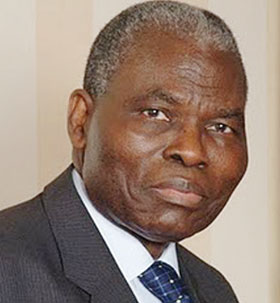Shadow Banking Grows to $67 Trillion Industry, Regulators Say
The shadow banking industry has grown to about $67 trillion, $6 trillion bigger than previously thought, leading global regulators to seek more oversight of financial transactions that fall outside traditional oversight.
The size of the shadow banking system, which includes the activities of money market funds, monoline insurers and off- balance sheet investment vehicles, “can create systemic risks” and “amplify market reactions when market liquidity is scarce,” the Financial Stability Board said in a report, which utilized more data than last year’s probe into the sector.
“Appropriate monitoring and regulatory frameworks for the shadow banking system needs to be in place to mitigate the build-up of risks,” the FSB said in the report published on its website.
While watchdogs have reined in excessive risk-taking by banks in the wake of the collapse of Lehman Brothers Holdings Inc. in 2008, they are concerned that lenders might use shadow banking to evade the clampdown. Michel Barnier, the European Union’s financial services chief, is planning to target money market funds in a first wave of rules for shadow banks next year.
The FSB, a global financial policy group comprised of regulators and central bankers, found that shadow banking grew by $41 trillion between 2002 and 2011. The share of activity based in the U.S. has declined from 44 percent in 2005 to 35 percent in 2011, moving to the U.K. and the rest of Europe.
Bypass Lenders
Supervisors consider shadow banking activities to be those that allow banks to carry out business off balance sheets, as well as those which allow investors to bypass lenders and the functions they traditionally fulfill on the markets.
The FSB also targeted repurchase agreements and securities lending for tougher rules, recommending that regulators implement minimum standards for calculating losses on the different types of collateral used in the transactions.
Repurchase agreements are contracts where one investor agrees to sell a security and then buy it back at a future date and a fixed price. Securities lending agreements involve institutional investors such as pension funds lending financial instruments against cash collateral.
The group is also concerned that regulators are unable to monitor the scale of the trades. Supervisors should “collect more data on securities lending and repo exposures amongst large international financial institutions with high urgency,” the FSB said in the report.
More Disclosure
Large firms should disclose more information about the deals to investors, the FSB said, and may be required to publish regular statements detailing how much collateral they have and what it is used for.
A bankruptcy examiner’s report found that Lehman used so- called Repo 105 transactions to move as much as $50 billion temporarily off its balance sheet to convince investors it wasn’t carrying too much debt.
Final rules will be submitted to leaders of the Group of 20 nations at a summit in St. Petersburg,Russia, next year, the FSB said. Mark Carney, chairman of the FSB, said earlier this month that regulators are holding “intense discussions” on shadow banks.
Source: Bloomberg









